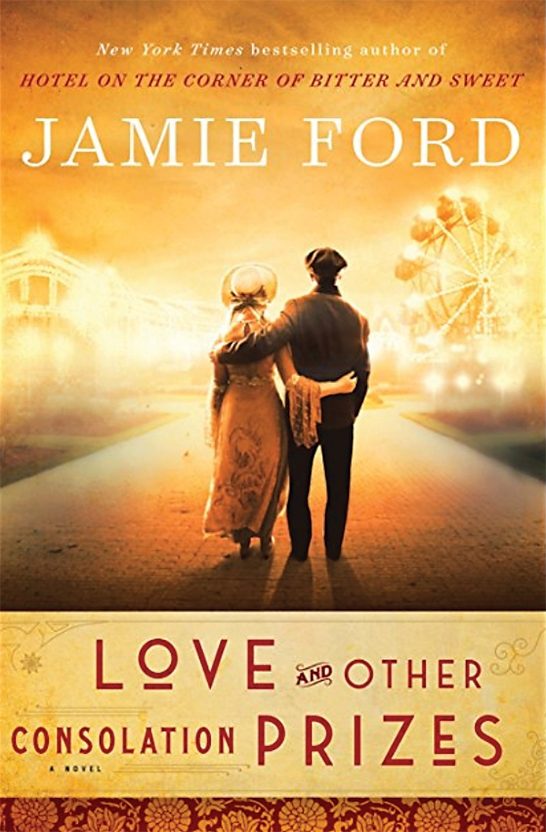JAMIE FORD; BALLANTINE BOOKS (2017)
Jamie Ford hit the literary scene in a big way in 2009 with his book The Hotel at the Corner of Bitter and Sweet, which became a New York Times Bestseller and was optioned for Hollywood (rumor is that the film is entering production under the auspices of George Takei). His next book, Songs of Willow Frost (2013) also hit the shelves with great reviews and eager anticipation from fans, but it is his latest book, Love and Other Consolation Prizes (2017) that I predict will ensure his entry into the canon of great American Literature.
For starters, the story is unlike anything you’ve probably ever read, even though the kernel of the plot is based on a true story: at the Seattle World’s Fair in 1909, a little orphan boy named Ernest—as in this novel—was raffled off in a drawing.
Yes, you read that right.
When Mr. Ford stumbled across that startling fact as he was doing research for what he thought might be his next novel, he knew he had to write about it. It helped that no one seemed to know whatever happened to that raffled child, so he felt free to weave a story that is inspiring and heartbreaking by turns—and completely plausible.
Even more fascinating is the milieu into which Ford sets his protagonist, the enigmatic Ernest Young. Having been sent from his native China alone by a starving mother to the US, “his mother must have known that the end of the world was near—when they saw the starving fishermen hauling in their nets, filled with the bodies of the dead.”
A few months later, after a long and horrific journey aboard a ship of literal sorrows, he lands in Seattle where he finds refuge of a sorts in a Christian orphanage governed by a strict Prohibitionist. She concocts the idea to raffle off a child to “a good home,” but her questionable ambition is derailed by a madam who needs a custodial assistant at her house of prostitution in Seattle’s tenderloin district. She wins the raffle and takes the child to her house of ill repute.
The experience turns out to be largely positive for the boy, who grows to maturity working for the house as a custodian and chauffeur. It turns out that many of the girls employed there are orphans themselves, and as outcasts from society, the clan of figures living at the house form a sort of ad hoc, but sincere and loving family, and Ford shows that familial love and the binds of unassailable friendship can arise in the most unlikely places.
The novel spans a period from the notorious era of Seattle vice (early 1900s) to the second World’s Fair (1962) that gave the world Seattle’s most famous landmark, the Space Needle. Consequently, Ford sets the penultimate scene in the rotating restaurant atop that landmark, deftly weaving together the strains of his story in a climactic scene that explores the many ways that love and friendship can affects us. “She was beginning to reframe her life—their life. It was a work in progress, but the image was coming together,” our narrator explains, capturing an insight about the way life has to work for all of us.










